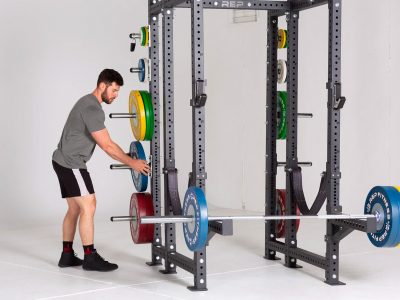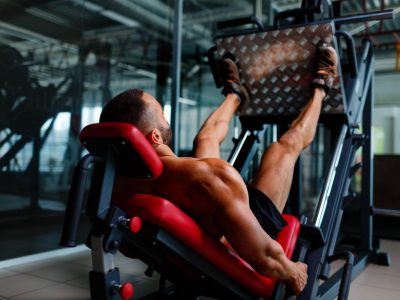Have you ever wondered, “Do treadmills use a lot of electricity?”
This article unravels the truth behind treadmill power consumption – we delve into factors affecting energy usage and how to calculate the cost on your wallet.
Bạn đang xem: Do Treadmills Use A Lot Of Electricity Updated 07/2024
Ready for some enlightenment? Let’s step right in!
Factors Affecting Treadmill Electricity Usage
Motor size
The size of your treadmill’s motor plays a substantial role in its electricity consumption. Generally, larger motors demand more power, with an average treadmill horsepower being around 2.
This translates to approximately 1,500W of power usage; thus on the upper end of the spectrum for treadmills’ power demands.
However, it’s worth noting that these larger motors are typically found in commercial-grade machines built for heavy-duty use over extended timeframes.
If you’re using a standard home model or plan moderate exercise routines – say no more than an hour per day – the energy usage is significantly lower and won’t make a notable dent in your electric bill.
Usage duration
The usage duration of a treadmill is one of the key factors that determine its electricity consumption.
The longer you use the treadmill, the more energy it will consume. However, it’s important to note that treadmills don’t require a lot of electricity unless you’re using them for extended periods every day.
On average, a conventional electric treadmill uses about 600 to 700 watts (W) of electricity.
So if you’re only using it for short workout sessions, the impact on your electricity bill will be minimal.
But if you’re a dedicated marathon runner logging several hours of running daily, then your treadmill’s power usage may have a more noticeable effect on your energy costs.
Speed
The speed at which you run or walk on a treadmill can impact its electricity usage. Higher speeds require more power to maintain, resulting in increased energy consumption.
It’s important to note that even though higher speeds may use more electricity, the overall difference in consumption is relatively minimal for most users.
The majority of treadmills operate within a range of 300 to 900 watts of power, regardless of speed.
So whether you prefer a leisurely stroll or an intense sprint, the impact on your electricity bill will be fairly consistent as long as you stay within this general range.
Incline
The incline feature on a treadmill can have an impact on its electricity usage. When you increase the incline, it requires more power from the motor to keep the belt moving against gravity.
This means that running on a higher incline setting will consume more electricity compared to running on a flat surface.
Xem thêm : Do Bench Presses Work Biceps Updated 07/2024
The exact amount of additional energy usage will depend on factors such as the angle of the incline and your body weight.
So if you frequently use the incline feature during your workouts, it’s good to keep in mind that it may contribute to slightly higher electricity consumption.
Treadmill age
The age of a treadmill can have an impact on its electricity usage. Older treadmills may be less energy-efficient compared to newer models, as they may not incorporate the latest technology and advancements in power consumption.
This means that older treadmills might use more electricity to provide the same workout experience as a newer model with similar specifications.
It’s important to keep this factor in mind when considering the potential energy consumption of your treadmill and weighing it against other factors such as motor size and usage duration.
By opting for a newer treadmill, you can potentially lower your overall electricity usage and save on costs over time.
User’s body weight
The weight of the user is another important factor that affects the electricity usage of a treadmill.
Heavier individuals tend to put more strain on the machine’s motor, causing it to work harder and consume more power.
This means that if you are on the heavier side, your treadmill will likely use more electricity compared to someone who weighs less.
So, while treadmills generally don’t use a lot of electricity, keep in mind that your body weight can have an impact on its power consumption.
It’s worth noting that this doesn’t mean you should avoid using a treadmill altogether if you’re heavier.
Treadmills are designed to handle different weights and can still provide an effective workout regardless of your size.
Extra features
Some treadmills come with extra features that can affect their electricity usage. These features may include built-in fans, LED screens, speakers, and Bluetooth connectivity.
While these additions can enhance your workout experience, they also consume more power.
For example, running a fan or playing music through the treadmill’s speakers will increase the overall electricity usage.
It’s important to keep in mind that opting for treadmills without these additional features can help reduce your energy consumption and ultimately save you money on your electricity bill.
Calculating Treadmill Electricity Consumption
Running cost
When it comes to the running cost of a treadmill, it largely depends on your electricity rates and how often you use the machine.
On average, if your electricity costs around .1305 cents per kilowatt, running a treadmill for an hour per day would cost less than $1.
Xem thêm : How Many Calories Does Leg Extensions Burn Updated 07/2024
This is because most treadmills typically use between 300 to 900 watts of power. However, keep in mind that if you are a serious marathon runner who spends 2-3 hours on the treadmill every day, your electricity usage may increase accordingly.
It’s important to estimate your usage and calculate the potential running costs before making any decisions.
Tips for Choosing an Energy Efficient Treadmill
Consider motor size and power efficiency
Choosing a treadmill with the right motor size and power efficiency is crucial when it comes to reducing electricity usage.
The larger the motor, the more energy it requires to operate. Opting for a treadmill with a smaller motor can significantly decrease its power consumption.
Additionally, look for treadmills that are designed with power efficiency in mind. These models often have features like variable speed settings and auto-adjustable inclines that help optimize energy usage based on your workout intensity.
By considering both motor size and power efficiency when purchasing a treadmill, you can minimize electricity consumption without compromising on performance or functionality.
Opt for manual treadmills
If you’re looking to save on electricity costs, opting for a manual treadmill could be a great choice. Manual treadmills don’t require any electrical power and rely solely on your own body movement to operate.
This means that you won’t have to worry about the electricity usage or running up your bill while getting in your daily workout.
Additionally, manual treadmills are often more affordable than their electric counterparts and provide a challenging workout as you control the speed and intensity yourself.
So if you’re aiming to go green and save some cash, consider choosing a manual treadmill for your home gym setup.
Run outside when possible
Running outside when possible is a great way to save on electricity usage with your treadmill. Not only does it give you a change of scenery and fresh air, but it also allows you to enjoy the natural terrain and different weather conditions.
Running outdoors eliminates the need for any electrical power at all, helping you reduce your energy consumption and saving money on your electricity bill.
Plus, running outside provides additional benefits such as increased vitamin D absorption from sunlight exposure and improved mental well-being from being in nature.
So, lace up those running shoes and hit the pavement whenever you can to make the most of your workout while minimizing your treadmill’s electricity usage.
Proper maintenance
Proper maintenance is essential for optimizing the electricity usage of your treadmill and ensuring its longevity. Here are some tips to keep in mind:
- Clean the treadmill regularly: Dust and debris can accumulate on the treadmill’s belt, motor, and other components, causing friction and increased power consumption. Wipe down the machine after each use and deep clean it periodically.
- Lubricate the belt: A well-lubricated belt reduces friction, allowing the treadmill to run more smoothly and efficiently. Follow the manufacturer’s instructions for lubrication intervals and use a silicone-based lubricant.
- Check and tighten bolts: Over time, vibrations from regular use can cause bolts to loosen. Check all areas of your treadmill for loose bolts or screws and tighten them as necessary.
- Monitor belt tension: If your treadmill’s belt is too loose or too tight, it can strain the motor, leading to higher energy consumption. Make sure to adjust the tension according to the manufacturer’s recommendations.
- Inspect electrical connections: Loose or damaged electrical connections can result in fluctuations in power supply, potentially affecting your treadmill’s performance and energy usage. Regularly inspect cords and plugs for any signs of damage or fraying.
- Keep ventilation areas clear: Treadmills generate heat during operation, so it’s crucial to maintain proper airflow around them. Ensure that there is enough space around the treadmill to avoid overheating issues.
Conclusion
In conclusion, while treadmills do consume electricity, they generally don’t use a lot unless you’re an avid runner who spends several hours on the machine daily.
Factors such as motor size, usage duration, and speed can impact the overall electricity consumption.
By choosing an energy-efficient treadmill and practicing proper maintenance, users can minimize their electricity costs while enjoying their workouts.
So don’t let concerns about electricity usage deter you from reaping the benefits of owning a treadmill for your fitness routine!
Nguồn: https://usgyms.net
Danh mục: Gym Equipment










